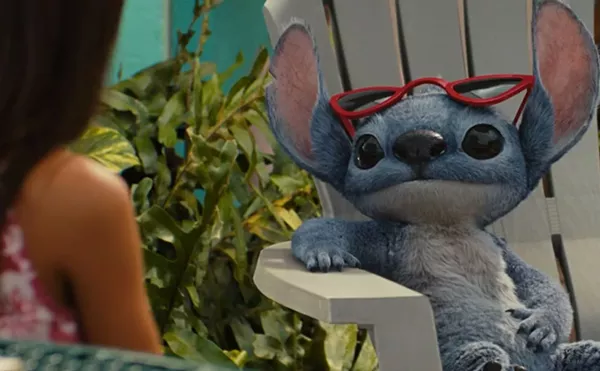
Audio By Carbonatix
[
{
"name": "GPT - Leaderboard - Inline - Content",
"component": "35519556",
"insertPoint": "5th",
"startingPoint": "3",
"requiredCountToDisplay": "3",
"maxInsertions": 100,
"adList": [
{
"adPreset": "LeaderboardInline"
}
]
}
]
Now held in high regard, Sergio Leone’s first three Westerns were fairly disreputable during their initial release, mainly because they were genre flicks and imported ones at that — the term “spaghetti Western” was originally as much dismissive as descriptive. But critical fashion has changed, mostly for the better, and Leone’s singular style is no longer seen as being something attached to pulp/macho adolescent fantasies. Directors don’t lose critical points these days for being entertaining, and today one can see Leone’s vision unclouded by the old prejudices.
Besides, Leone’s movies were always more grown-up than their reputation suggested back then. The amorality of his Westerns in particular was nearly without precedent: It’s a genre that has traditionally had a clear-cut sense of good and bad (or evil), so much so that conservative social critic Allan Bloom, in his famous scholarly screed The Closing of the American Mind, saw its demise as a popular form as being symptomatic of our cultural slide into the murk of moral relativism. (That the Western’s Manichaean scheme has been preserved by the modern action film wouldn’t have occurred to Bloom, who didn’t know squat about movies and who looked at popular culture from a great distance.)
Director Budd Boetticher had made a series of excellent Westerns in the ’50s with Randolph Scott as an ambiguous good guy, his virtue usually tainted by his past and/or a hard-won pragmatism. Leone’s hero, as personified by Clint Eastwood, was “good” only in comparison to the liars, cheats, toadies and greed-driven homicidal maniacs who surrounded him.
Leone’s first two Westerns, A Fistful of Dollars (1964) and For A Few Dollars More (1965), reworkings and resettings of Kurosawa’s Yojimbo and Sanjuro, had established his basic style of desolate wide-screen shots punctuated by close-ups of sweaty, weather-beaten faces, an effective distillation of the usual Western mise-en-scène of hard men in a hard landscape. The mood was gritty and stoic and, with Spain standing in for the Old West, slightly disorienting. With The Good, the Bad and the Ugly (1966 — and henceforth GBU), currently being shown with some inconsequential footage originally excised for its American release reinstated, all antes have been upped. Sun-baked faces still fill the screen and humbling vistas still diminish the protagonists, but the mode has changed from tightly mythic to loosely epic. With GBU’s backdrop of the Civil War, it’s not just a band of outlaws or a town that is sinking in bloody vendettas, but an entire civilization.
The movie starts with the good and the ugly, Blondie (Clint Eastwood) and Tuco (Eli Wallach), an odd couple who are running a scam with Blondie turning the fugitive Tuco over to the authorities, collecting the reward money and then, just as Tuco is about to be hanged, shooting the rope so that it breaks, allowing the felon to escape in the confusion. They then meet, split the bounty and go to another town and do it again. Inevitably there’s a falling out and the two spend the first half of the movie trying to kill each other. During the second half they re-form their uneasy alliance when, after a series of opera buffa-like events, they discover that each has half the necessary information that will lead them to a cache of buried gold. Aside from each other, they now must contend with the bad, Angel Eyes (Lee Van Cleef), your basic psychopathic gunslinger, determined to coerce the secret out of the two and claim the money for himself.
Although GBU was another step for Eastwood toward icon status, Wallach steals the picture, mainly because he has the juiciest part. While Blondie is a man of few words, Tuco never shuts up and it’s his gleeful sadism, his manic rants and self-pitying sense of injustice that keeps the movie moving. It’s a great comic performance. In fact, it’s a great comic movie, and with its killer score by Ennio Morricone, alternately mocking and rousing, it’s larger than life and almost as strange.
Showing at the Detroit Film Theatre (inside the DIA, 5200 Woodward Ave., Detroit), Friday-Sunday, Sept. 12-14. Call 313-833-3237.
Richard C. Walls writes about film for Metro Times. E-mail letters@metrotimes.com.





